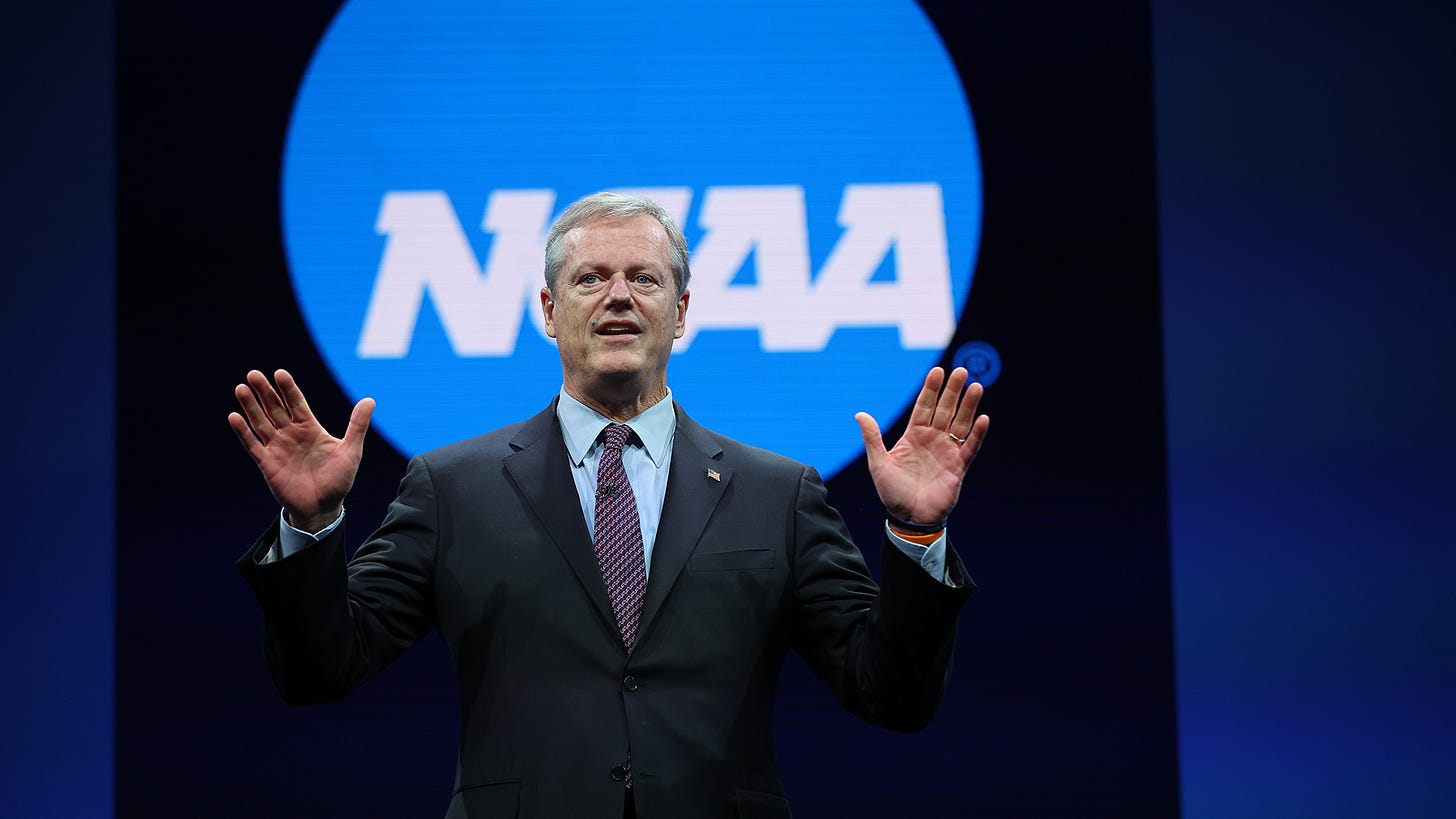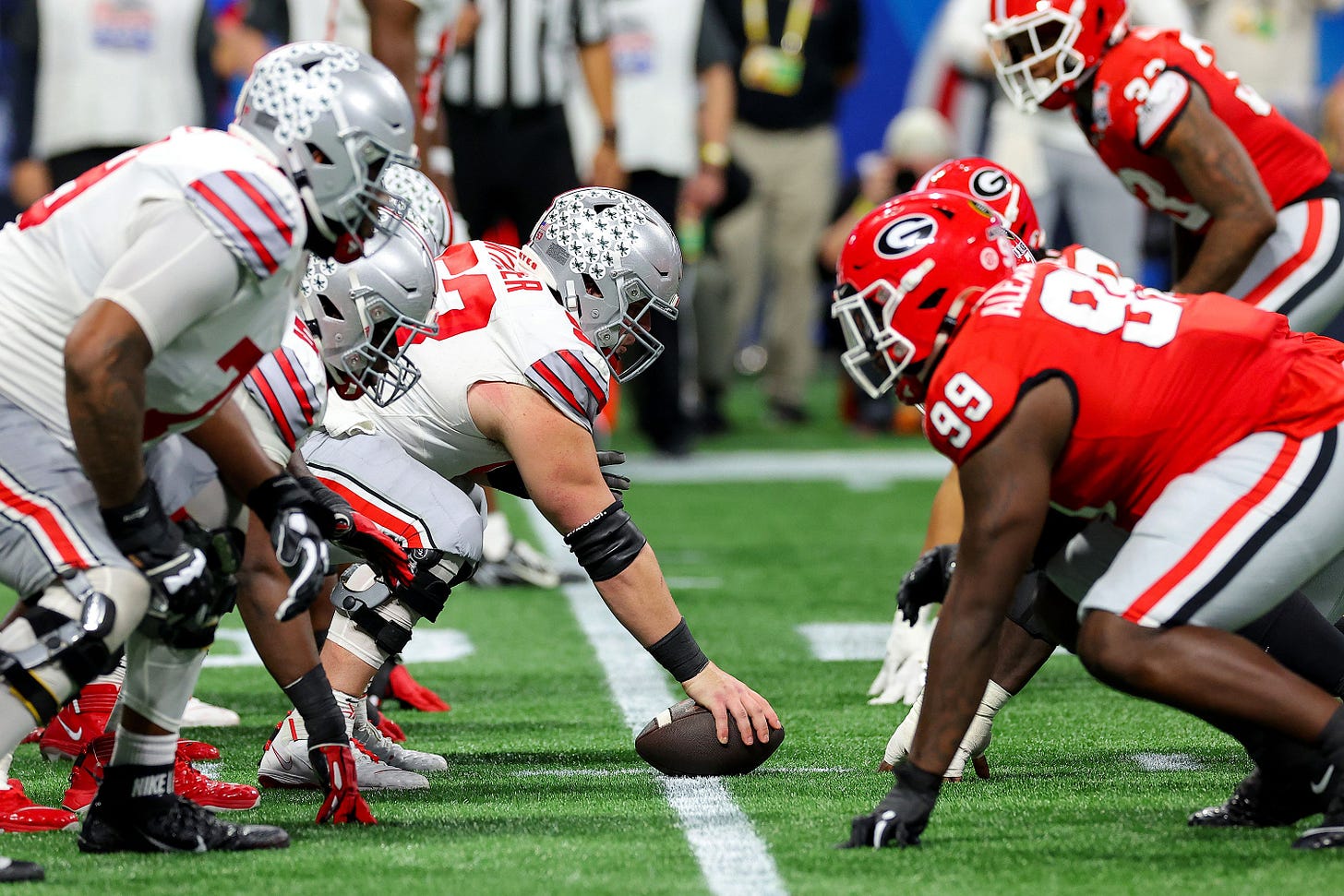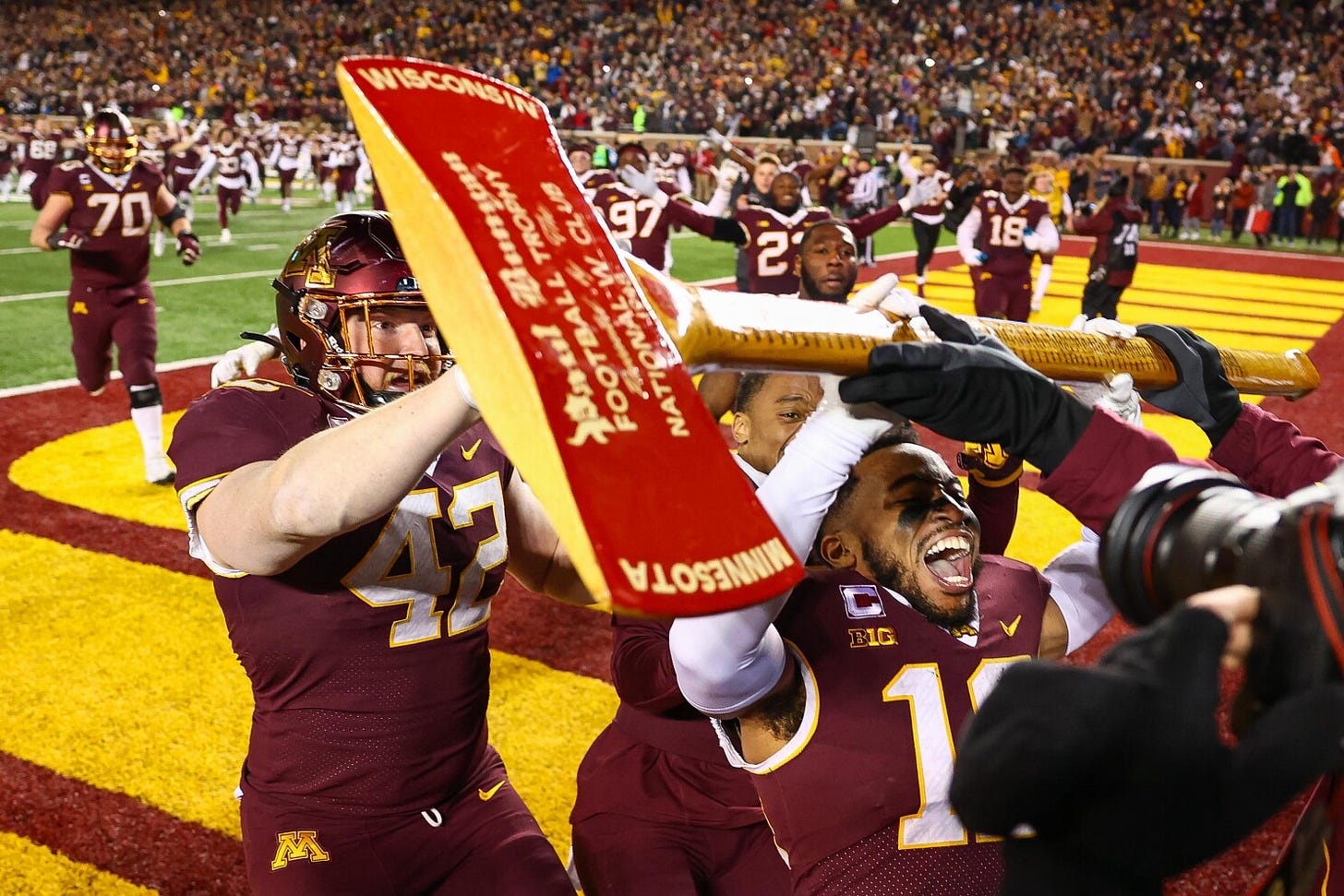Imagining A Big Ten & SEC 'Merger'
In light of the PGA Tour's merger with LIV Golf, we took a look at how the college football world would change in a "super-conference" era.
Welcome to Blue Chip Journal by Adam Breneman — a 2x per-week newsletter with analysis, hot takes, and news on all things college football, NIL, and recruiting. Subscribe now and join nearly 13,000 other sports fans, and share this newsletter with all the college football fans you know!
This newsletter is presented by... Lofta
Everything good begins with healthy rest. Sleep disorders like sleep apnea steal from your precious time and wellbeing. At Lofta, their state of the art innovation helps take it all back.
Whether living with sleep apnea forces you to make adjustments for optimization or to understanding results along the way, Lofta’s goal is to provide you with sleep apnea support therapy for a sleep that you can only dream about.
Click on the link below to receive a 50% off coupon on Lofta’s at home sleep apnea study!
Imagining A Big Ten & SEC ‘Merger’
Hey friends,
Almost a month ago, the PGA Tour’s leadership team announced a stunning, wildly unexpected long-term plan to merge with LIV Golf — which operates on the backs of Saudi Arabia’s Public Investment Fund.
Since LIV Golf’s inaugural event in London last June, the unconventional circuit snagged several of the PGA Tour’s most popular members quite easily due to golf’s first-ever implementation of guaranteed contracts.
From major champions including Phil Mickelson, Dustin Johnson, Brooks Koepka, and Sergio Garcia, to budding talents among the likes of Harold Varner, Abraham Ancer, and Cam Smith, the expectedly failed expedition flipped golf’s professional monopoly upside down.
Frankly, the PGA Tour simply made the move to remain financially favored with its LIV Golf supplement.
With morality concerns, traditional groundwork, and individualized competition strongholds set aside, the PGA Tour caved — and who’s to say college football couldn’t be heading in a similar direction?
Although the framework of the comparison wildly differs, the basis stands on common ground.
We’ve already seen blue bloods step further away from regional roots to grander financial pastures in Texas, Oklahoma, and USC.
In order to maximize college football’s popularity, product, and competitiveness across the board, its future resides in a 32-team, NFL-like structure, stemming from a “merger” between the SEC and Big Ten.
At this point, I know I’ve lost a lot of you — especially traditionalists in State College imagining regular season contests in Gainesville, Nashville, and everywhere in between.
But, why couldn’t this happen? Although the solidification of an adaptable plan isn’t even close to being in the works (so we think), here’s what I believe would come from a merger between the sport’s two most powerful league entities:
The NCAA Would Lose ALL Future Bargaining Power
Goodbye and good riddance, NCAA!
And also, wave in the rearview mirror to recruiting violations, tampering, and transfer portal etiquette. The era of free agency would arrive, and it would be cutthroat.
Since the NCAA officially legalized name, image, and likeness (NIL) earning opportunities on July 1, 2021, the governing body conceded its position of power to the likes of conference commissioners and hungry administrators with “win at all cost” attitudes.
For most dominant programs, the mindset has remained constant for years — regardless of rule tweaks. However, without the risk of NCAA infractions looming, all currently blurred lines would be erased in a modernly amended, commissioner-penned rule framework.
Without the NCAA’s stronghold, programs could offer more scholarships, outline sponsorship opportunities in accordance with state laws, and redesign a largely-flawed postseason structure.
Additionally, the financial hit would prove to be inconsequential as the “merger” would grow in media rights, compelling league requirements, and the onset of corporate sponsorships.
In 2022, just “60% of the NCAA’s annual revenue,” per its website, was distributed directly to Division I member schools and conferences. The 60% clip equates to only $600 million.
When the pie is split in so many different cuts, naturally, the piece results in a sample rather than a dessert dish.
Last year alone, the Big Ten raked in a whopping $845.6 million in revenue, slotting the conference more than $40 million above the SEC ($802 million, to be exact).
The third highest-earning Power Five conference proved to be the ACC, but with a gaping disparity to boot. The ACC warranted just $617 in total revenue — but the figure still puts the NCAA’s allotment to shame.
Now, you might be saying “But what about the other sports? How would they compete outside of the NCAA’s realm?”
Quite simply, the joint media rights deal between the SEC and Big Ten would give both men’s and women’s sports more funding and financial stability than ever before. The initial few million-dollar hit would undoubtedly pay for itself within three fiscal cycles.
After all, both recently-signed media deals equal nearly $13 BILLION in future revenue, with eight billion coming from the Big Ten’s market-setting transaction.
True On-Field Parity Would Return
College football is the ONLY sport where weekly watchers could (probably) correctly predict half of its playoff field in week zero.
Isn’t that frustrating for a sport glammed with “meaningful” games where most outcomes are already all-but predetermined?
The issue will likely only be accentuated by the 12-team playoff’s structure update set to take shape next season. But, imagine a four-team bracket with just SEC and Big Ten foes?
Hypothetically, the fourth seed could have three or four losses, just based on a 12-game conference campaign alone.
This year, Georgia is likely slated to play one ranked team when Tennessee welcomes Kirby Smart’s group to Neyland Stadium on November 18.
Now, imagine a scenario where Georgia plays USC, Michigan, Ohio State, and Penn State in a 12-game regular season without non-conference fluff like Ball State or UAB.
The most common argument against a two-power conference’s sole regular-season slate lies in increased injury possibilities without a true preseason in place.
In the NFL, it’s best-on-best every week, regardless of an opponent’s regular season record. If coaches wanted to play a MAC or Sun Belt opponent in replacement of dwindling spring game interest or in early August to gauge progress, “buy” games could fund lower-standing programs’ annual revenue goals, just as they currently do.
This newsletter is presented by... PrizePicks
PrizePicks is the easiest way to play daily fantasy. Getting started is very simple — register for an account, make a deposit, and pick more or less on 2-6 player stats to win payouts of up to 25x!
Aside from offering an initial deposit match of up to $100, fans can now use my promo code AdamB for an even BIGGER discount upon downloading the app. Click on the link below to get started today!
Divisional Pods Would Maintain College Football’s Regionality, Uniqueness
Within the 32-team structure, eight four-team divisions would keep college football’s rivalry importance intact, while also promoting the adoption of new blockbuster matchups.
You’d have regions ranging from Iowa, Nebraska, Wisconsin, and Minnesota to Alabama, Auburn, LSU, and Mississippi State. Annual Iron Bowl battles or strifes for Paul Bunyan’s Axe in the Midwest would remain unblemished, pleasing college football’s traditional crowd and bringing in new, younger audience members through unconventional cross-geographical matchups.
Pivoting back to the NFL’s structure, the Big Ten would practically serve as the AFC and SEC squads would default as the NFC before combining suit in the playoffs.
With media rights stipulations, both conference championships would still occur for regional supremacy and grand playoff seeding on the line.
College football as we know it wouldn’t simply wither away, folks.
The game is in such a tactile state with endless possibilities to maintain the pillars that make it unique, while also fostering a more competitively balanced on-field brand.
Change is coming — and it already has — whether we like it or not. It’s time to embrace the future instead of dwelling on the past.
If you have any questions, comments, or feedback, please don’t hesitate to reach out to me by email at adam@brenemanmedia.com.
You can also find me on Twitter, Instagram, TikTok, LinkedIn or Facebook.
Shoutout to Connor Krause for helping to write this newsletter and putting it together!
Interested in advertising with Blue Chip Journal? Email me.











